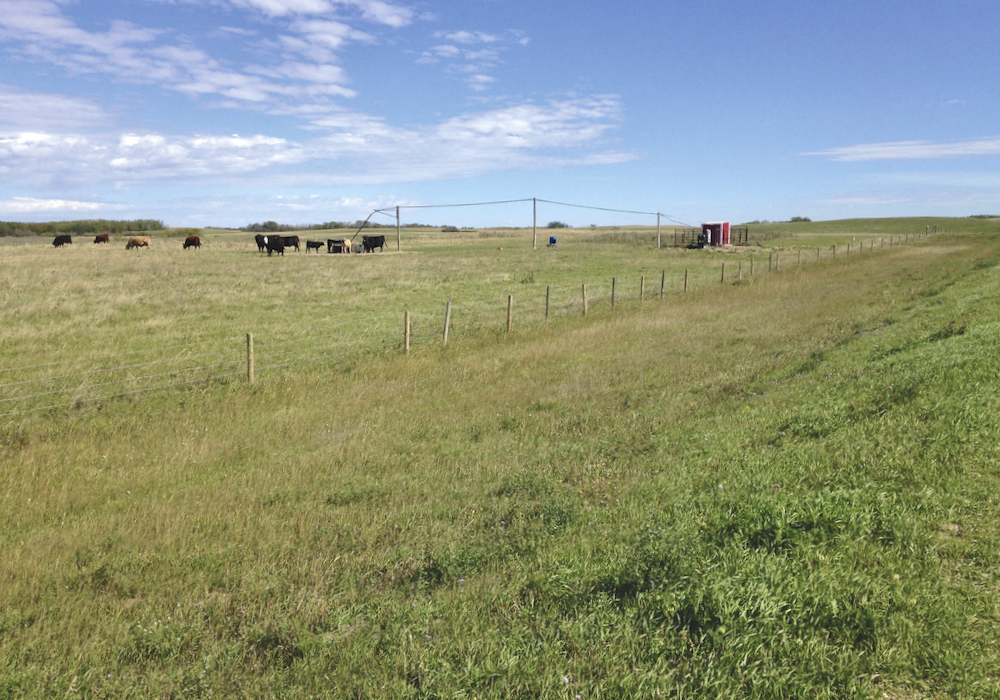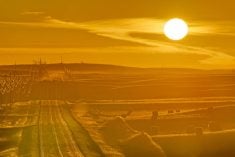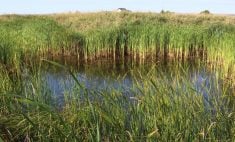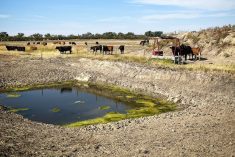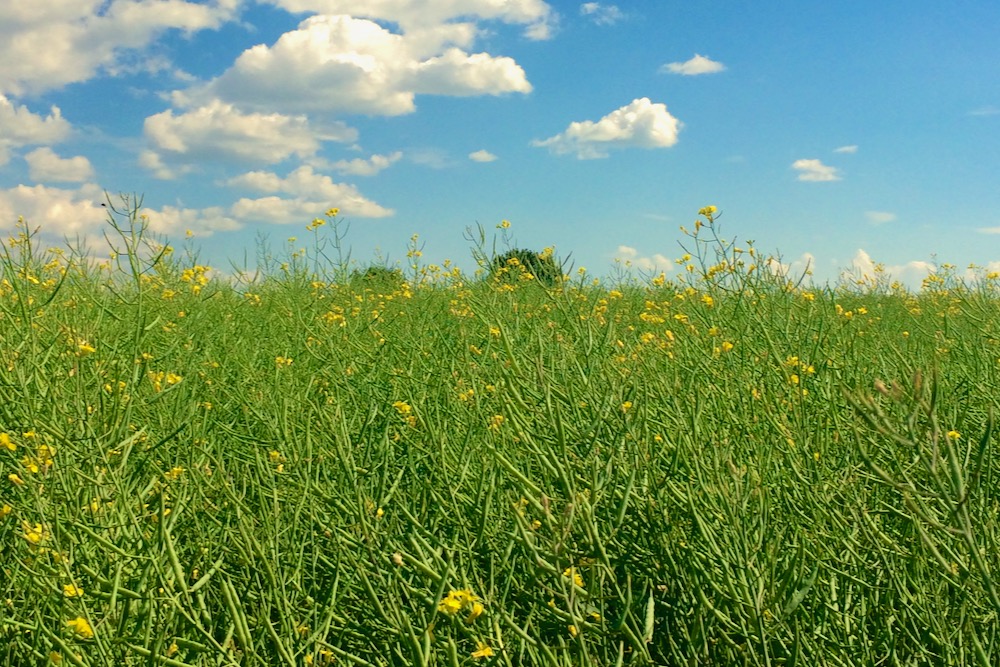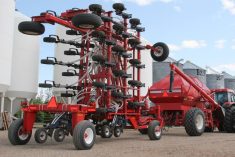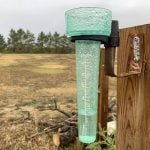The drought of 2021 has left pastures with dry sloughs and dugouts. A good solution to the water problem in pastures is often a well, or multiple wells. Many former community pastures had several wells with old-fashioned windmills that filled the need in spades. In our soil salinity work of the 1980s and 1990s, we made great use of the excellent drillers’ logs and E-logs that were created in pasture well projects.
A search for water is really a search for sand/gravel.
Technically, an aquifer is any deposit that delivers water enough to satisfy the intended use. In the old days, when you might send Dick and Jane out to fetch a pail of water a few times a day, a big yield was not a big deal. But now that Dick and Jane need showers, flush toilets, etc., shallow bored wells relying only on seepage from silt and clay do not suffice.
Read Also

How much nitrogen can farmers really cut?
Manitoba fertilizer trials seek a sweet spot where farmers can cut nitrogen rates, with a nitrification inhibitor, without hurting yield and with fewer greenhouse gas emissions.
Sand point well
If the soil is sand over sand over sand to many feet, a shallow water table is often present and can be accessed by simply driving in a sand point. All such wells are good quality (low minerals) but yields will not usually accommodate stock.
Shallow dug or bored wells
Dug wells are a thing of the past, but shallow wells at about 50 feet are common and can serve very well. In many areas, the water table is less than 50 feet, so a bored well will have water in it. However, if it is just a seepage well, the yield will be very low and the quality is often poor. Not many cows will be served with a seepage well. A proper sand layer (aquifer) must be found.
Before a bored well is constructed, auger test holes to approximately 50 feet are dug to determine if a proper sand/gravel layer is present.
Just last year, my neighbour completed a shallow bored well (50 feet) across the road from my home quarter at Dundurn, Sask. The sand came in about 20 feet and the water rose to about five feet below ground surface. It is a non-flowing artesian well. The well produces 10-plus gallons per minute with approximately 2,200 parts per million TDS (total dissolved solids), so good for stock.
Had my neighbour drilled in the nearby swale at an elevation of about 15 feet lower, he would have encountered a flowing well. A flowing well sounds great but they can be a challenge to manage.
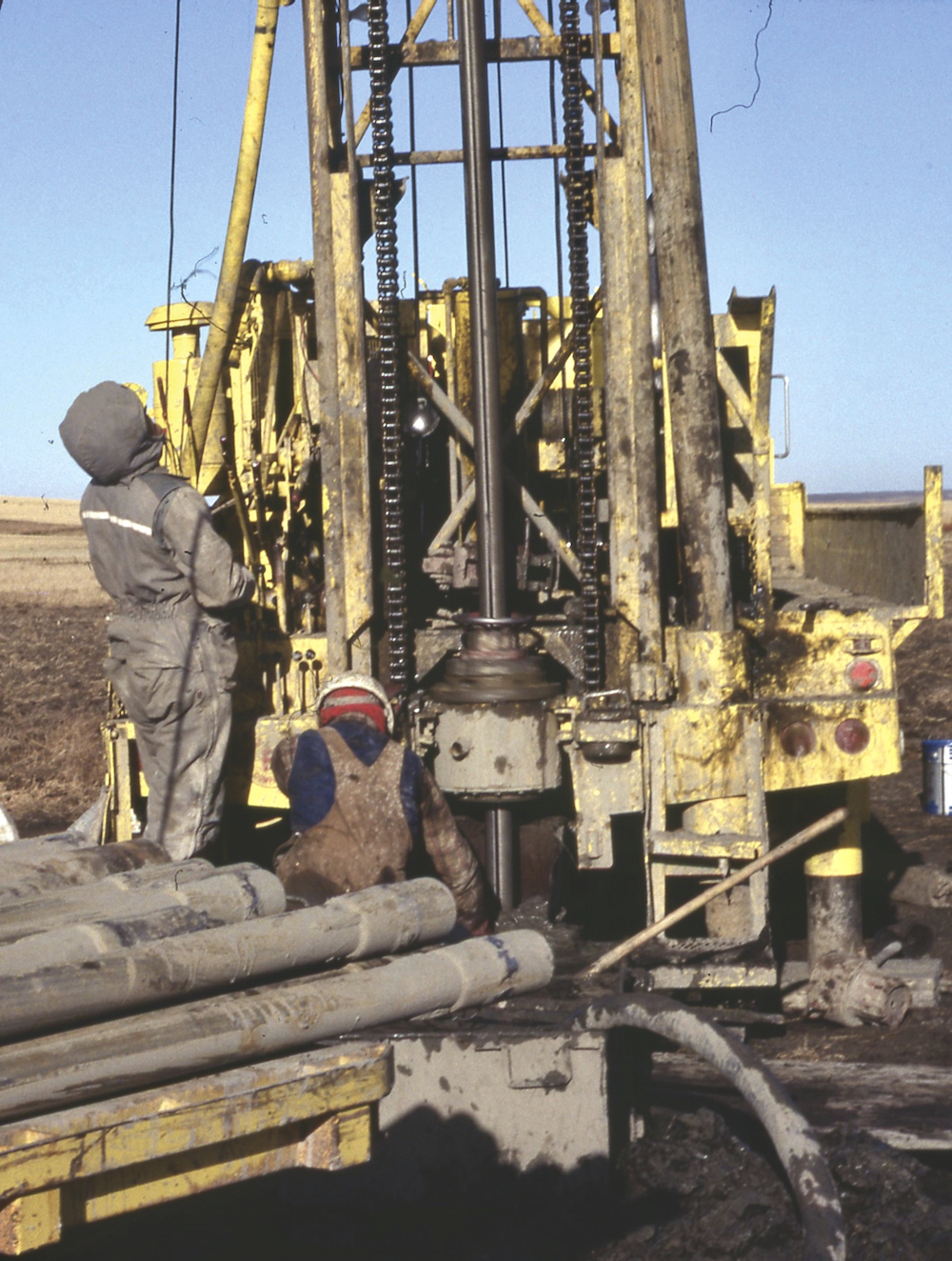
Drilled wells
For serious well drilling, a hydraulic rotary rig is used. The drilling will identify any sand or gravel layers and the E-log will define those layers exactly, so the wells’ screens can be properly placed. In our soil salinity programs, we hired the local contractors to do the serious deep drilling. Many different well depth options are available when hydraulic rotary equipment is available. Drilling to several hundred feet is no problem, but can be expensive.
Water well contractors
The most important thing about obtaining a good well is to find a contractor with a good reputation. Water well contactors are much like farmers in many ways. They are fiercely independent and know nothing about scheduled work hours. When a hole is started, it usually has to be finished before shutting down for the day.
Water well contractors have to be good mechanics and welders, have a good business head and have good employee and customer relations. They also have to be inquisitive and constantly learning. Each new hole can be new learning, just like each crop is for farmers.
In our soil salinity program, we had many memorable and happy times when we were in the hands of a competent driller. I held the purse strings so was the ultimate boss but had nothing but respect and admiration for the work contractors did for us. I learned a lot from water well drillers.
Types of water
In the Prairie region, wells completed in surficial sand aquifers have low mineral content and, hence, are fairly soft.
Glacial wells/intertill aquifers: Wells completed in glacial deposits have moderate to high mineral content and will be hard or very hard — like the spoon stands up in your coffee, hard. Most farm wells in central Saskatchewan are completed in sand aquifers that are sandwiched between two layers of glacial till from two separate glaciations and, hence, are termed intertill aquifers. Glacial till is the great mix of sand, silt, clay, stones and boulders left behind by the glacier itself.
Hard water means that calcium and magnesium salts prevail and glacial deposits have such salts.
Pre-glacial/bedrock aquifers: Bedrock simply means deposits laid down before glaciations. Bedrock aquifers can be moderately to strongly mineralized but the salts are dominantly sodium salts and, hence, the water is soft.
Buried valley aquifers were present before glaciations. The glaciers simply buried those valleys as they passed over. Such aquifers are fed from the side by bedrock water and from the top by glacial waters. I describe buried valley aquifers as “half-hard.” The hardness is much less than would be predicted by the total minerals. In Saskatchewan, the Hatfield Valley and Tyner Valley are two extensive and well-known buried valleys. Such aquifers can deliver large quantities of water but the quality is not good.
Total minerals can be estimated by a simple field test with an EC (electrical conductivity) meter and total hardness can be easily determined by using a simple Hach kit. It should be easy to do a field estimate to get approximate values, but a lab test is needed to get complete information on a water sample.
Sources of water well information
Alberta has much water well information easily accessible online at the Alberta government website. Much of Alberta has very thin deposits of glacial material, so many wells are completed in bedrock and have soft water. Water chemistry information is also available online for many wells.
Saskatchewan water well information is available online via the Saskatchewan Water Security Agency. I use that website a lot and it is easy to navigate. There is no water chemistry data attached to the water well data or easily accessible anywhere except online at saskh2o.ca, which is for towns, cities, colonies, etc.
As part of our soil salinity work, we prepared water well maps on a topographic map base and included all of the very large 1935 water well survey data. There were many farms at that time so many records. Those maps have been scanned and provided to the Water Security Agency but have not been put on its website.
Manitoba has very good water well and groundwater maps for most of the ag area but to my knowledge it is not available online. However, there is much useful water well information at the Manitoba government website.
Readers of Henry’s Handbook of Soil and Water can check out Chapter 9 for more detailed information about aquifers and wells in the Prairie provinces.
Sometime this winter, I will do a piece on flowing wells. Why do they flow in the first place and how do you plug them? We had many experiences with flowing wells in soil salinity work and a few exciting and stressful times plugging them. It will be a fun story.
Hope your harvest, small as it might be, is over by the time this hits your mailbox. It often happens that a bad drought with poor crops leads to a harvest period with small showers that hinder harvest but do little for next year’s soil water storage.


